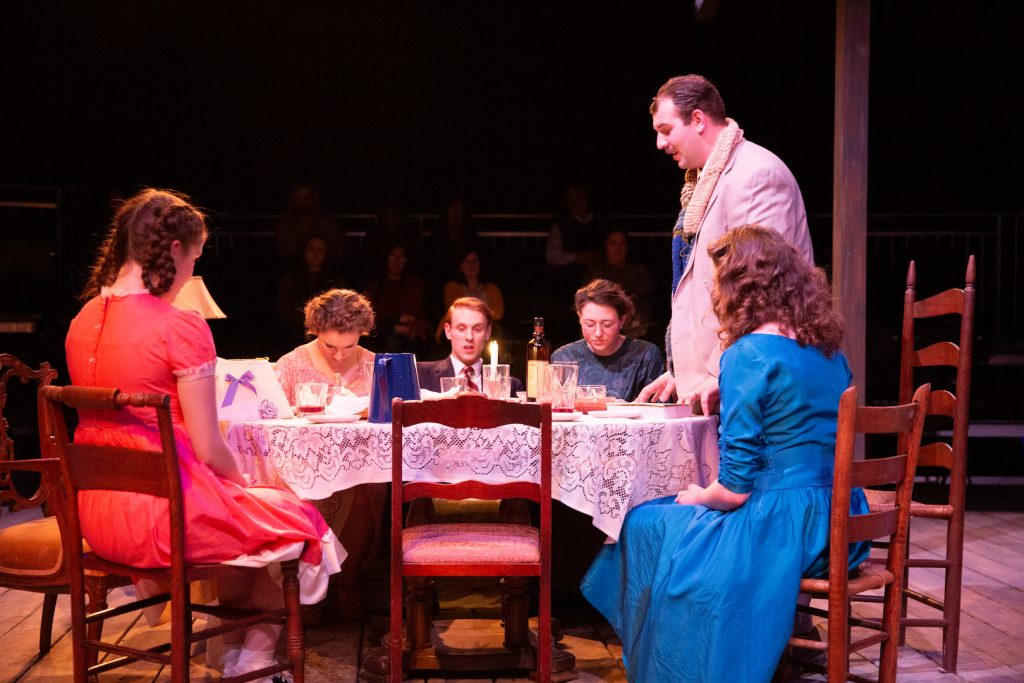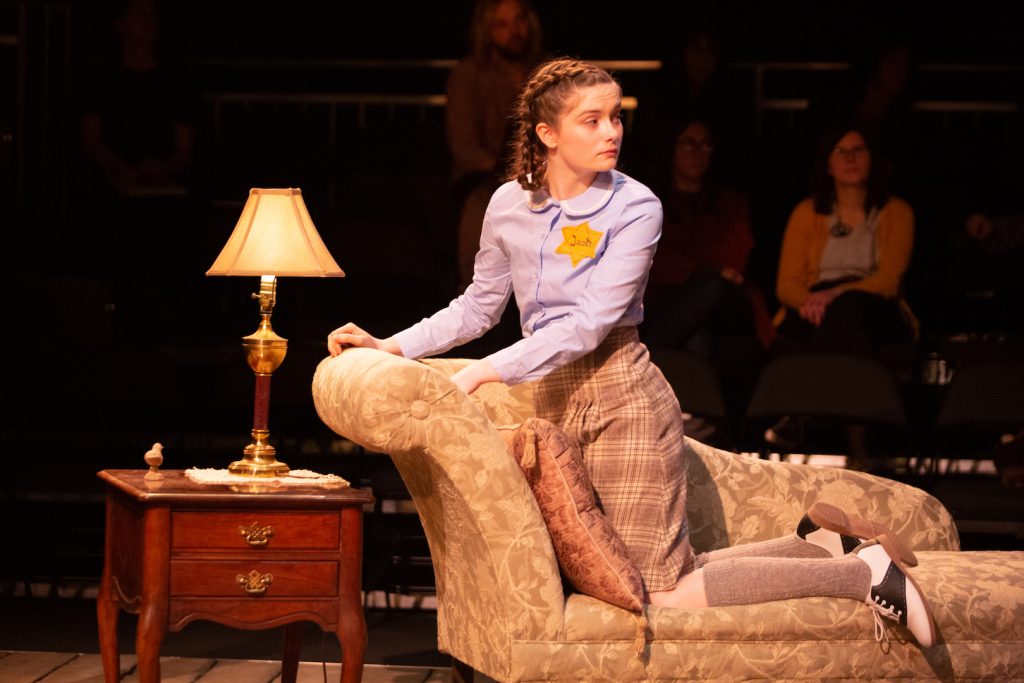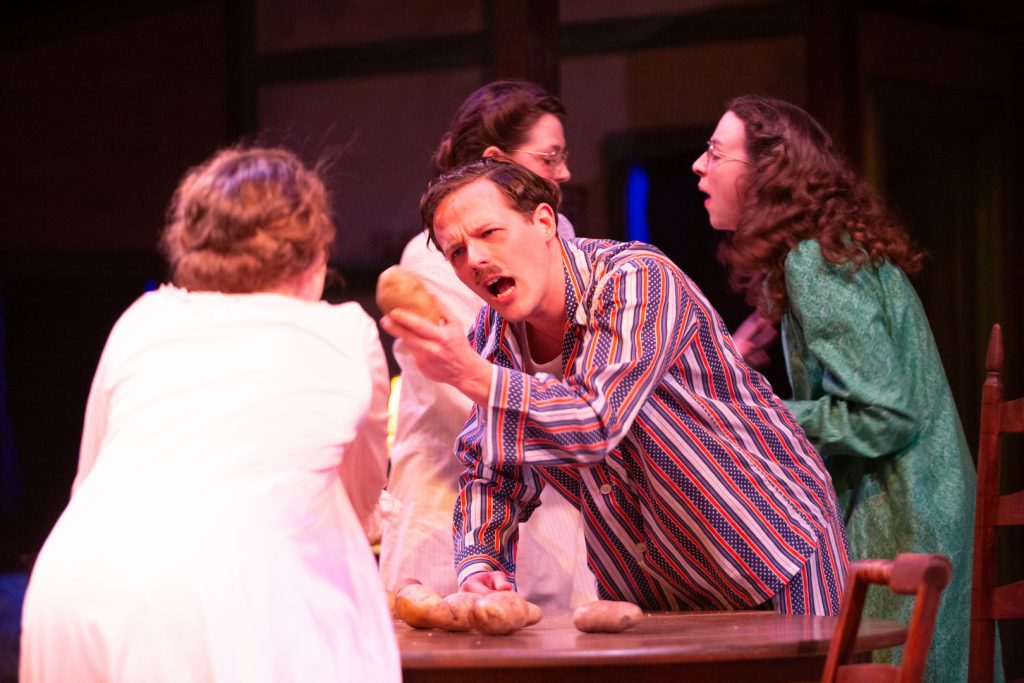“I still believe, in spite of everything, that people are truly good at heart.”
While hiding for two years with seven other Jews from the Nazi occupation of Amsterdam, Netherlands, Anne Frank wrote those words in her beloved diary. Her father Otto Frank published the diary after the war.
Liberty University’s production of “The Diary of Anne Frank” compacts those two years of hiding into a few hours. The play, its script approved by Otto Frank, brings audiences into the Secret Annex where Anne Frank grew from a whirlwind child into a self-possessed young woman.
Director Chris Nelson, associate professor for Liberty’s Department of Theatre Arts, compared the play to a photo album.

“Each scene is like a picture of a day or a moment in a day, and so it has its own life,” Nelson said. “And when you get to the end of a photo album there’s always this sadness that comes because you realize you’re done, and you always kind of wish you saw more pictures.”
Most actors remain on-stage the entire show, even when not directly engaged in a scene. They play cards, sleep or fold laundry, going about daily life in the cramped attic.
“You’re living constantly, even if you’re not the focal point of the action,” Nelson said.
Freshman Kelsey Dial, who plays Anne Frank, acknowledged the pressure of the audience sitting mere feet away in the Black Box Theater.
“There’s really no room to ‘fake it till you make it’ or just play around,” Dial said. “If you don’t know what you’re doing, if you’re not living in the character, people will know.”
This, combined with portraying complex people under extraordinary pressure, while mastering accents and speaking over creaking floorboards, challenged the actors.
“Putting that all together, as well as trying to do justice to someone who really lived, someone who really wanted their story to be told, is a big responsibility,” Dial said. “And I know I’m growing so much from just learning how to do that truthfully.”

Audiences climb the stairs past the bookcase and are immersed in the world of the Annex, where blankets cover the windows and using running water at the wrong time puts everyone at risk. The sound of boots tramping past in the street or a crash from the offices below freezes the hiding Jews, and audiences wait with them until, for at least a moment, the danger recedes.
Amidst this tension, Anne Frank learns algebra, gazes through a skylight and celebrates Hanukkah with her family. Bright and quick as a candle flame, she dreams of her life after the war, determined to impact the world through her writing. When they hear of the Normandy invasion, she laughs and dances in her bright nightgown.
Nelson said knowing the ending makes what he calls a “sacred story” even more impactful.
“They thought (freedom) was so close when Normandy happened,” Nelson said. “We know how far we were. You know that and it hits you.”
When the show ends, the cast sings Israel’s anthem, the Hatikvah — “The Hope.” Audiences climb back down out of the attic and past the bookcase. As they leave, they can sign the book of remembrance in the lobby, under a facsimile of the last two pages of Anne Frank’s diary.
Dial said she hopes audiences carry Anne Frank’s hope and strength with them.
“There is always hope,” Dial said. “(Anne) always kept faith and hope that everything would be alright, that the Lord would work it out. … If people who were literally hiding for their lives could remain hopeful and trust in the Lord, then I don’t think there’s really any excuse for us not to.”
